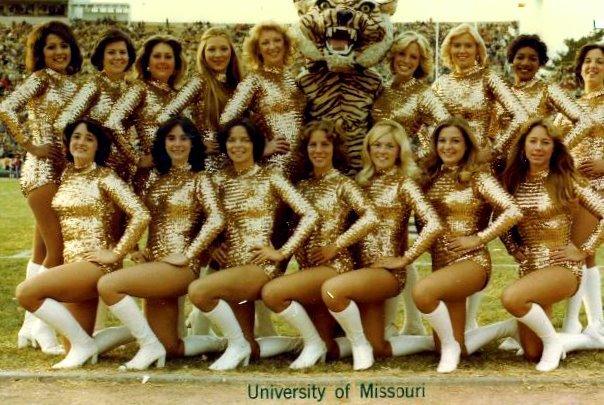
Since his first introduction, Truman has gone through some extreme rebranding with the help of past Tigers to make him into the mascot he is today.
As the screams of over 60,000 people consume Faurot Field, there is one hype man in the center of it all: Truman the Tiger. Since the first appearance of the tiger mascot, many different people have held an impactful role in building the legacy Truman now carries.
The first tiger mascots were created around the 1940s and included a female “Lil Tiger,” and a male “Big Tiger.” The costumes were originally made of a yellow cloth suit with painted black stripes on it and a paper mache tiger head. Then, it was not unusual to see the mascots without the head on since the head was so heavy and often called scary.
In the summer of 1976, up-and-coming “Big Tiger,” Matthew Krueger had an idea to remake the mask. Krueger teamed up with MU’s Art Department, and set out with the goal of making a mask that was more manageable and practical. The design was based off of the MU logo at the time. They ultimately constructed the head out of fiberglass and attached it to a maskless football helmet.
In 1981, “Lil Tiger” and “Big Tiger” merged into one — but it still was not the Truman MU students know today. This tiger went nameless for three years before earning his name in 1984 during a fundraiser called “Name the Tiger,” held to raise money for a costume case for the mascot suit. Truman officially received his name in memory of Harry S. Truman, the 33rd U.S. President and Missouri native.
Two years after he received the name “Truman,” Director of Athletics, Joe Castiglione, recruited Missouri native Joe Turnbough and his team to help with the development of Truman’s look and personality. On Sept. 13, 1986, Truman made his debut appearance at the football game against Utah. Now, people recognize that day as his official birthday.
Today, Truman auditionees are interviewed and are expected to commit to a year-long role. The interview has certain aspects like dancing in the suit to the fight song and improv to see if the person can accurately represent Truman’s lively and friendly personality.
Building relationships with everyone in the MU community is a big part of Truman’s role. From attending sporting events to spending time at MU’s children’s hospital, Truman can be found all throughout Columbia. The secret society of those who have been Truman in the past have their own club, but it does not stop them from making friendships. These lifelong friendships are not exclusive between past mascots — they expand to those who helped bring Truman to life on and off the field.
“The esprit decor that developed among all these enthusiastic students, athletes and musicians was incredible,” Krueger said. “Many remain my lifelong friends.”
Being Truman is more than just putting on a tiger costume and entertaining more than 60,000 fans — it brings excitement and maintains a legacy. Truman is the face of MU, and that would not be possible without the help of those in the past who have brought him to life and everyone in the future who will continue to do so.
Edited by Molly Levine | [email protected]
Copyedited by Ethan Palgon and Hannah Taylor | [email protected]
Edited by Emily Skidmore | [email protected]